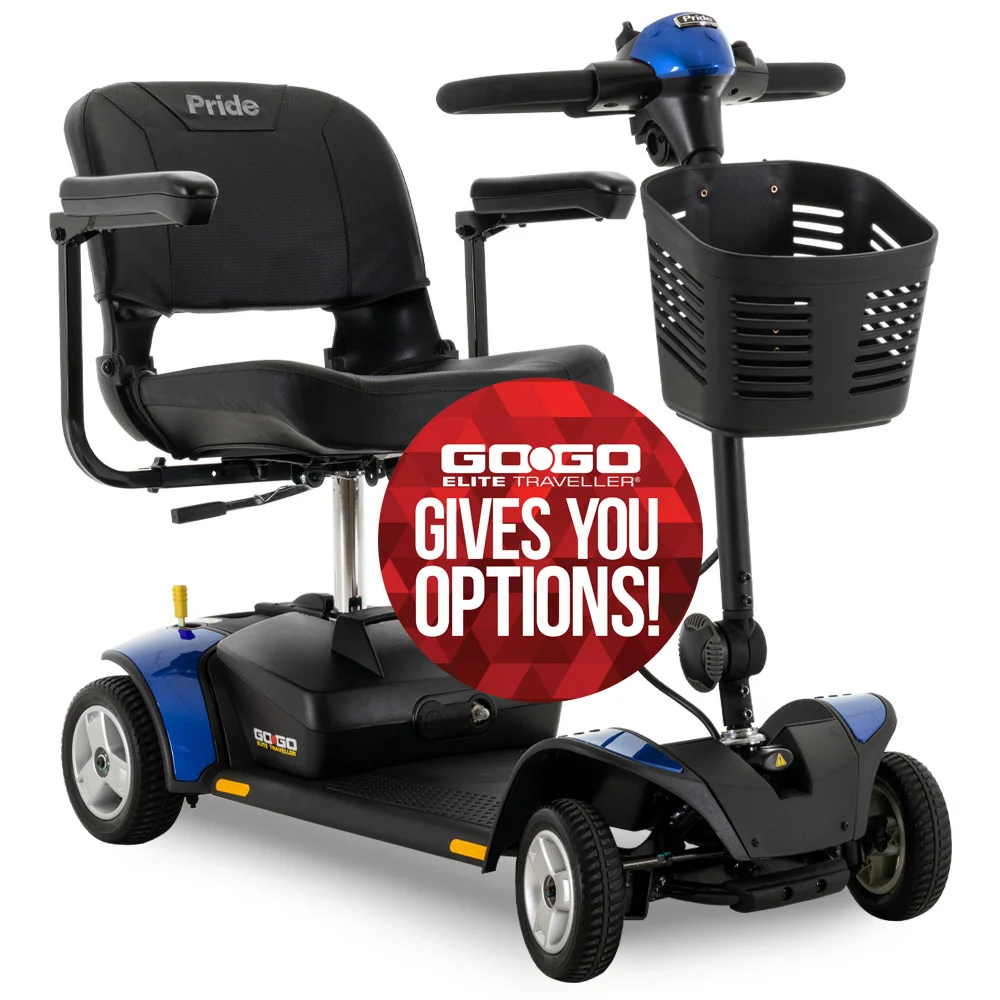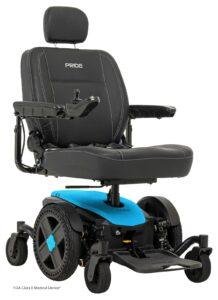Mobility scooters are valuable aids that enhance independence and accessibility for individuals with mobility challenges. Whether you’re new to using a mobility scooter or seeking to refine your skills, this guide covers everything you need to know to operate one safely and effectively.
1. Understanding Your Mobility Scooter
Before using a mobility scooter in Anaheim , familiarize yourself with its components and features:
- Controls: The primary controls include the throttle or joystick (which controls direction and speed), the horn, and the brake. Some scooters also have advanced features like speed limiters or programmable settings.
- Battery: Mobility scooters are powered by rechargeable batteries. Understand how to check battery levels and how to charge them.
- Seat and Armrests: Adjustable seats and armrests provide comfort and support. Learn how to adjust these to fit your body.
- Wheels: Check if your scooter has three or four wheels. Four-wheel scooters offer more stability, while three-wheel scooters provide better maneuverability.
- Storage: Many scooters have baskets or storage compartments for carrying personal items.
2. Preparing to Ride
Charging the Battery: Ensure your scooter’s battery is fully charged before use. Charging times vary depending on the scooter model, so refer to the manufacturer’s guidelines. Most scooters have a battery indicator to show when charging is needed.
Inspect the Scooter: Perform a pre-ride inspection. Check tire pressure, ensure brakes are functioning, and verify that all parts are secure. Also, ensure the scooter is clean and free of any obstructions.
Adjust the Seat and Armrests: Position the seat so you can comfortably reach the controls and have proper support. Adjust the armrests for a relaxed grip on the controls.
Safety Gear: Wear appropriate clothing and any necessary safety gear, such as a helmet, if recommended. Ensure loose clothing or personal items are secured.
3. Getting On and Off the Scooter
Getting On:
- Position the Scooter: Ensure the scooter is on a flat, stable surface. Set the brake to prevent movement.
- Approach Carefully: Stand beside the scooter and hold onto the armrests or seat.
- Sit Down: Lower yourself into the seat, ensuring your back is straight and your feet are flat on the floor. Make any final adjustments to the seat position for comfort.
Getting Off:
- Park the Scooter: Place the scooter in a stable position, set the brake, and turn off the power if necessary.
- Stand Up: Push yourself up from the seat using the armrests or nearby stable surfaces. Ensure you’re balanced before stepping away from the scooter.
4. Operating the Scooter
Starting the Scooter:
- Turn On the Power: Most Mobility scooters in Anaheim have a power switch or key. Turn it on and wait for any startup indicators or self-checks to complete.
- Check the Controls: Ensure the joystick or throttle is in the neutral position before starting.
Moving Forward:
- Use the Throttle: Gently push the joystick or throttle forward to accelerate. Start slowly and gradually increase speed as you become comfortable.
- Steering: Use the joystick to steer. Turn it left or right to navigate your path.
Stopping and Braking:
- Slow Down: Gradually release the throttle to reduce speed. Some scooters have regenerative braking, which slows the scooter automatically when you release the throttle.
- Brake: Use the brake control to come to a complete stop if needed. Make sure you’re fully stopped before making any adjustments or dismounting.
Turning:
- Make Wide Turns: Especially in tight spaces, make wide turns to avoid collisions. Slow down before turning to maintain control.
- Use the Controls Smoothly: Adjust the joystick or throttle gradually to prevent abrupt movements.
5. Maneuvering in Different Environments
Indoors:
- Navigate Tight Spaces: Use slow speeds and gentle steering to navigate through doorways and around furniture.
- Floor Surfaces: Be cautious on uneven or slippery surfaces. Adjust your speed to avoid tipping over or slipping.
Outdoors:
- Uneven Terrain: Choose scooters with good suspension or larger wheels if you’ll be navigating rough terrain.
- Slopes and Curbs: Approach inclines slowly and avoid steep slopes to prevent tipping. Use curb cuts or ramps when available.
Weather Conditions:
- Rain and Snow: Avoid using the mobility scooter in extreme weather conditions that could affect traction and visibility. If you must go out, ensure the scooter is equipped with appropriate weather protection and that the battery is fully charged.
6. Maintenance and Care
Regular Cleaning:
- Wipe Down: Clean the scooter’s surface with a damp cloth regularly. Avoid using harsh chemicals that could damage the finish.
- Check for Debris: Ensure that wheels and moving parts are free from dirt and debris.
Battery Care:
- Charge Regularly: Keep the battery charged and avoid letting it deplete completely. Follow the manufacturer’s guidelines for charging intervals and maintenance.
- Inspect Battery Terminals: Check for corrosion or damage and clean the terminals as needed.
Professional Servicing:
- Annual Checkups: Schedule regular maintenance checks with a professional to ensure all parts are functioning correctly.
- Repairs: Address any mechanical issues or repairs promptly to prevent further damage.
7. Safety Tips
- Obey Traffic Rules: When using the scooter on public roads, follow traffic laws and use designated paths or sidewalks when possible.
- Stay Aware: Always be mindful of your surroundings, especially when navigating busy areas or crossing streets.
- Communicate: Use the scooter’s horn or other signaling devices to alert pedestrians or other drivers of your presence.
- Avoid Overloading: Do not exceed the scooter’s weight capacity to prevent damage or instability.
8. Troubleshooting Common Issues
Scooter Won’t Start:
- Check the Battery: Ensure the mobility scooter battery is fully charged and properly connected.
- Inspect the Fuse: Look for blown fuses and replace them if needed.
Uneven Speed:
- Throttle Adjustment: Check for any issues with the throttle or joystick and ensure it’s functioning correctly.
- Consult the Manual: Refer to the user manual for specific troubleshooting steps or contact a professional.
Noise or Vibration:
- Check for Loose Parts: Inspect the mobility scooter for loose or damaged components and tighten or replace them as necessary.
- Professional Service: If the issue persists, seek assistance from a qualified technician.
Conclusion
Using a mobility scooter in Anaheim effectively involves understanding its features, practicing safe operation, and maintaining it properly. By following the guidelines provided, you can ensure a smooth and enjoyable experience with your scooter, enhancing your mobility and independence. Always consult your scooter’s user manual for specific instructions and seek professional assistance for any technical issues.






